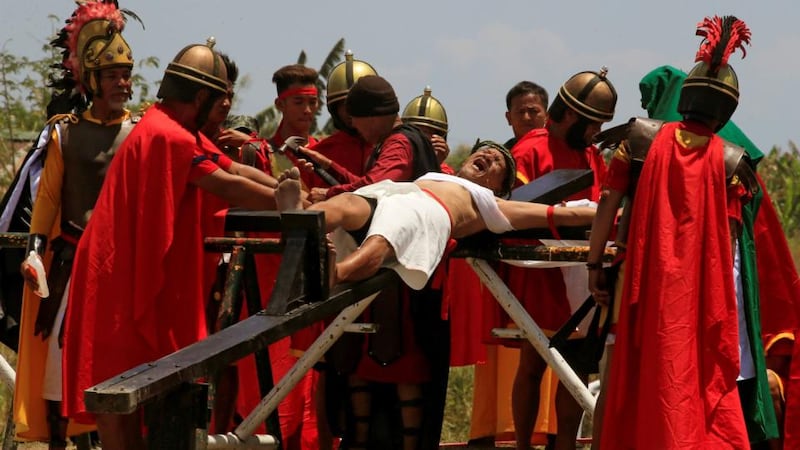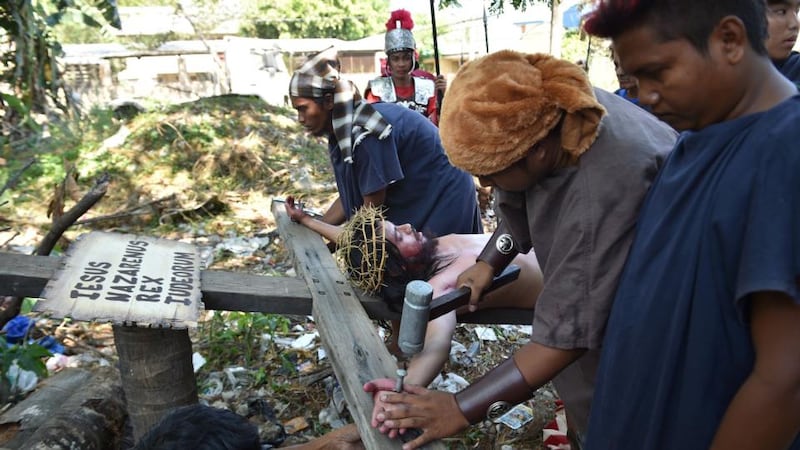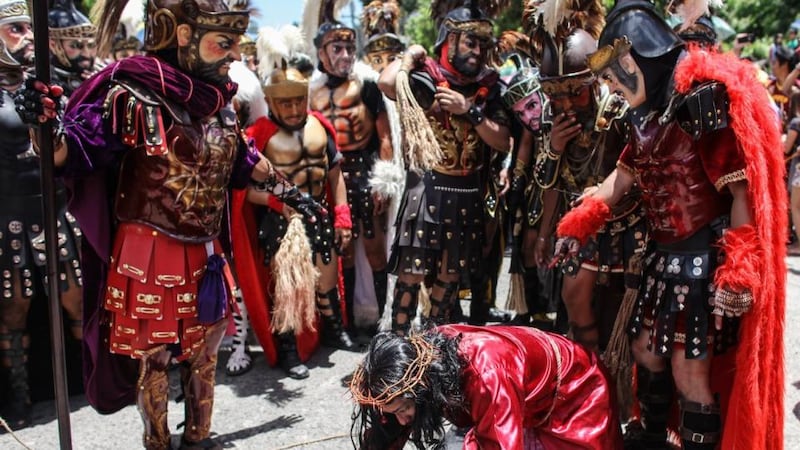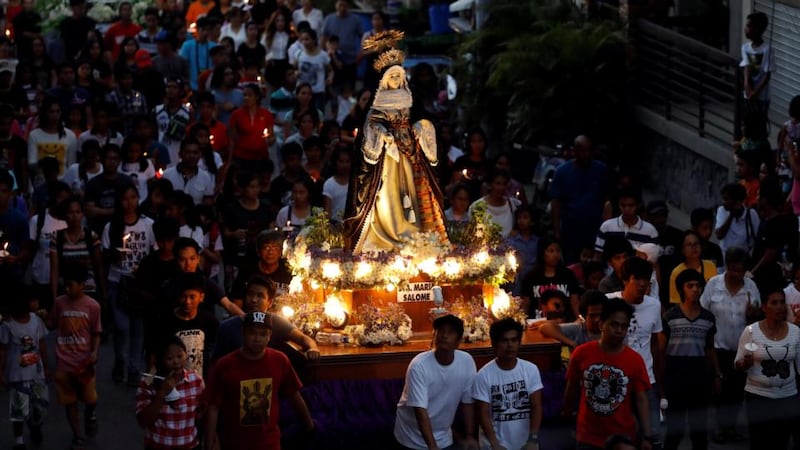Catholics in the Philippines re-enacted the crucifixion of Jesus Christ in a gory display of devotion on Good Friday, with actors costumed as Roman soldiers hammering nails of stainless steel through their hands and feet into wooden crosses.
Nine Filipinos were nailed to crosses in three villages in the province of Pampanga, 80km (50 miles) north of the capital, Manila, drawing hundreds of tourists despite the Catholic church's disapproval of what it sees as a form of folk religion.



Ruben Enaje, who was nailed to a cross for the 31st consecutive year, said praying for those killed by criminals and drug addicts in the country was his key motivation to participate this year.
“I am praying for the victims, the victims of drug addicts,” said Mr Enaje. “These drug addicts can waste their life, but we should also still pray for them because they’ve done wrong.”
More than 8,000 suspected drug addicts and dealers have been killed since president Rodrigo Duterte launched a bloody war on drugs in June. More than 2,600 of the deaths were in police operations, but many others were in mysterious circumstances.
Mr Enaje said he wished good health for the brash Philippine leader to “do what he thinks needs to be done in the country”.

The Philippines has Asia’s largest Catholic population, comprising 80 per cent of a population of more than 100 million.
Penitents whipping themselves and the series of crucifixions feature in the annual Philippine re-enactment of the passion of Jesus Christ, which started as a stage play about 60 years ago.
Poor people in the province began the custom as a way of seeking forgiveness, cures for illness and the fulfilment of other wishes, although the Catholic church decries it as a “misinterpretation of faith”.
"It was a pretty wild thing to kind of watch and experience," said Canadian tourist Matt Kenic. "It's very intense."
"I pity them and I felt like crying," said Philippine tourist Teresa Cruz.
Reuters









